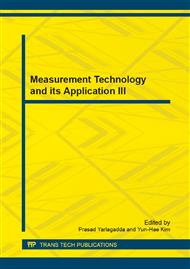p.1951
p.1955
p.1959
p.1964
p.1969
p.1978
p.1982
p.1987
p.1991
Fire Spread Model for Drum-Tower District of Tianjin Based on Cellular Automaton
Abstract:
The Drum-Tower District is a historic site in the Inner place of Tianjin which represents the commercial culture,ecdemic culture,exotic culture and civilian culture of Tianjin. The buildings of this region are usually made of wood and other highly combustible materials. Once there be a fire, the influence will be very serious. The study of fire spread model Drum-Tower District is necessary. In the model of fire spread the cellular automaton rules were used. The effects of the different influence coefficients on the evacuation time were investigated, and the typical characteristics of space-time dynamics were analyzed. The numerical simulations show that the model is very good and can be used as a tool to predict fire.
Info:
Periodical:
Pages:
1987-1990
Citation:
Online since:
June 2014
Authors:
Price:
Сopyright:
© 2014 Trans Tech Publications Ltd. All Rights Reserved
Share:
Citation:


